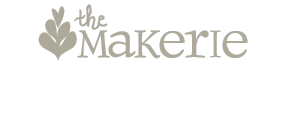Painting with Natural Dyes with Elizabeth McTear | Sweet Paul Makerie
Painting with Natural Dyes with Elizabeth McTear | Sweet Paul Makerie
Taught by: Elizabeth McTear
Saturday, April 8 : morning
Sunday, April 9 : morning
Color grows all around us, sometimes in spectacular blooms, and sometimes in the humble common plants we overlook or take for granted. It lays hidden in the bark or heartwood of some trees, or hides in your kitchen cabinet of spices and herbs. Join me and learn about color growing all around you, and take part in one of the oldest human traditions by painting and stamping natural dye pigments onto fabrics.
Students will get to experiment with several natural dye pigments:
Yellow from the WELD plant (Reseda luteola), a North American and European weed that often grows in hard scrabbled waste spaces, like along roadsides in dry sandy soil. Weld is one of the oldest dyes on the planet, with accounts of its use and recipe in the famous artifact, the Stockholm Papyrus (300 AD) that details many dye recipes as well as other craft skills.
Red from the Quebracho Rojo tree (Schinopsis quebracho-colorado). Found in the Gran Chaco region of Argentina, Quebracho is a dense hardwood that is commonly used as fuel for the legendary Argentine barbecue but it is also an important tannin for the leather industry as the heartwood is rich in tannin. Recently quebracho has been listed by winemaking suppliers as it is used to resist oxidation of red wines as well as impart flavor.
Brown from the CUTCH tree (Acacia catechu), used extensively in Indonesian textiles, was widely used to dye military uniforms the ubiquitous khaki color we are all familiar with today. Khaki is also a Hindi word describing "dust, earth color, soil", an appropriate word for a dye that easily produces such tones.
Black from the LOGWOOD tree (Haematoxylum campechianum), a native of Central America. Wildly popular for the black tones it produces, logwood became a globally exported commodity during the 17th century through the 19th century.
Today this dye is still in commercial and medical use, as an important stain, Haematoxylin, for studying microscopic anatomy. The logwood we use today is sustainably harvested from Mexico.
From these simple colors, one can mix and find an earthy rainbow with which to paint. Students will also receive test swatches of various kinds of cotton and silk fabrics to test on. Using your own inspiration and having the chance to look through my curated collection of books you will paint on some small silk habotai handkerchiefs to gain confidence on, and finally you will receive a large piece of raw silk (roughly 16 by16) to work with. At home you can either sew this into a pillow or use it as a wall hanging.
Skill Level
no experience necessary
Materials to Bring
. apron to protect clothing .
Materials Provided
. paint brushes .
. embroidery hoops to stretch fabric onto .
. paint dishes to mix color .
. cut stamps for printing .
. jars for water .
. textile books for inspiration .
. organic printing gum .
. dyes .
. fabric .
. plexi for rolling out dye pigments for stamping .
. brayers .
About Elizabeth
Founded in 2010, Honest Alchemy is a sustainable textile and accessory design company that uses 100% natural fibers and plant-based pigments. Handmade by Philadelphia-based artist Elizabeth McTear, each piece is made with a deliberate consideration for tradition and her vision of “utilitarian art for the everyday.” As the daughter of a quilter and granddaughter of an embroider, Elizabeth was surrounded by textiles growing up, giving her a natural inclination towards the textile arts. While earning her BFA at Moore College of Art and Design, Elizabeth learned about a vast array of textile traditions, sparking her interest in mali tribal designs, Japanese traditions, and Scandinavian design - all points of reference in her work today. After graduation, Elizabeth started working with natural dyes as a way to marry her degree with her love of nature.
To this day, the natural world serves as the greatest driving force behind Honest Alchemy. Through planting a natural dye garden and foraging materials in her community, Elizabeth explores and celebrates themes like the changing of the seasons and that natural cycle of plants, while working to make Honest Alchemy as eco-friendly as possible.
View Elizabeth’s work here: www.honestalchemy.co and reach out to her via email: elizabeth@honestalchemy.co
To follow along as her dye garden grows, or see behind-the-scenes process shots of her work, follow her on instagram: @honstealchemyco.
Contact
honestalchemy.co
instagram/honestalchemyco
elizabeth@honestalchemy.co










